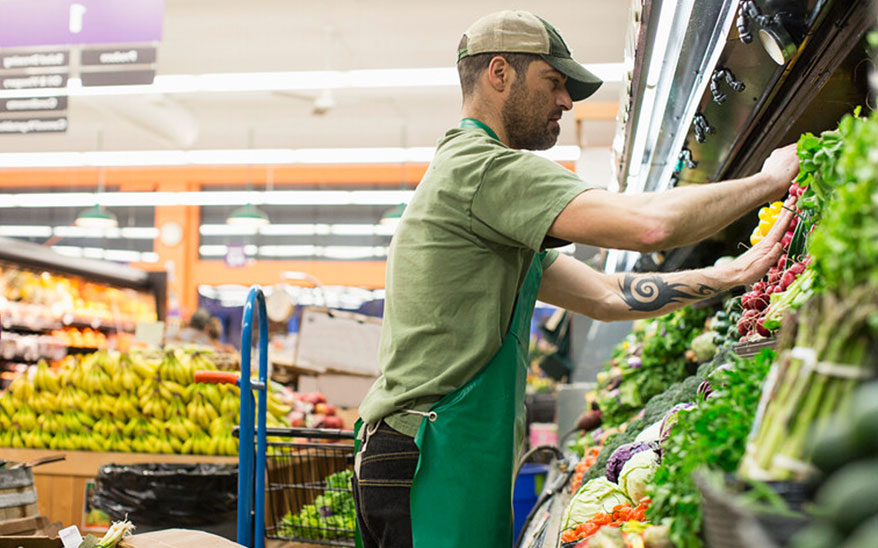Point Of Sale: Achieving Customer Nirvana
- December 1, 2021
- By Natalie Berg

Imagine a world where shoppers can walk into a clothing store, scan the price tag on a dress, and complete payment on the spot. Imagine a world where virtual stylists allow shoppers to seamlessly pay-by-link, or a world where in-store shoppers collecting their online orders aren’t just handed a package but are greeted with personalized recommendations to complement their purchase.
This world isn’t so far off, according to Manhattan Associates Solutions Executive Joe Kamara. “We’ve built a unified platform that brings the best of traditional Point of Sale (POS), order management and store operations together so you can orchestrate these different flows.”
In conversation with Natalie Berg, Retail Analyst and Founder of NBK Retail, Kamara said that the next generation POS is being accelerated by the pandemic-driven shift to digital. While in crisis mode last year, retailers quickly pivoted to ensure that stores could continue serving customers via click & collect and curbside pickup, while simultaneously processing online returns in-store. Kamara believes that this behavior will outlast the pandemic, reinforcing the need for retailers to ensure they are equipped with the right tools to seamlessly serve the customer across multiple touchpoints.
CONSIDERING POS AS PART OF THE CUSTOMER EXPERIENCE JOURNEY
For many retailers around the globe, this is becoming standard practice. Even in the years leading up to the pandemic, the role of POS was being drastically redefined as the industry adapted for the digital era.
- PRE-PURCHASE - traditionally, retailers took a store-only view of the customer and the sharing of data and shopper preferences across channels was limited. Today, there is an enterprise view of the customer, and retailers have full visibility into purchase history as well as sharing of digital data.
- PURCHASE - when it came to out-of-stocks, the experience used to be “filled with roadblocks and friction,” according to Kamara. Today, however, thanks to retailers’ endless aisle capabilities, shoppers can make a single purchase for items that are available both in and out of the store.
- POST-PURCHASE - it’s difficult to cast our minds back to a time when stores would not accept online returns, given the ease and proliferation of choice today when it comes to returning goods purchased online.
The industry has come a long way to meet the needs of the 21st-century shopper who wants to shop on their terms, irrespective of device or channel used. But, as we witness a post-pandemic acceleration in the convergence of physical and digital retail, it’s imperative that retailers continue to move the dial, removing any remaining friction points from the in-store experience. This is no time for complacency.
For example, if we go back to the perennial problem of out-of-stocks, it’s hard to believe that even in this day and age, only a small minority of retailers are capable of offering in-store purchasing from another store’s inventory. From a customer experience perspective, this feels entirely unacceptable given the industry’s broader efforts to digitize the physical store. Not only do retailers risk losing the sale but it can be detrimental to brand loyalty in the long-term too.
THE FUTURE OF ECOMMERCE IS STORES
Recognizing that the role of the store is no longer limited to selling, it’s essential that bricks and mortar retail is repositioned as a hub for fulfillment. The benefits are clear: retailers with store fulfillment options see higher revenue growth (114% increase when click and collect is implemented and 60% increase when ship from store is implemented). The future of ecommerce is stores.
In order to meet customers’ supercharged expectations, retailers must adopt a sell/fullfil/engage anywhere mentality. However, when it comes to future-ready POS implementation, retailers often make three common mistakes, according to Kamara:
- Adopting a store-only plan, damaging future agility
- Minimal investment in change (e.g. limited budget for user training; limited project communication plan)
- Selecting a “proven” vendor with old technology
All too often, retail organizations are still thinking in silos. Instead, Kamara recommends that retailers develop a unified commerce roadmap (POS + order management), make a clear plan for organizational change, and select the right vendor capable of delivering long term.
You can find out more about Manhattan Associates’ POS solutions here.




